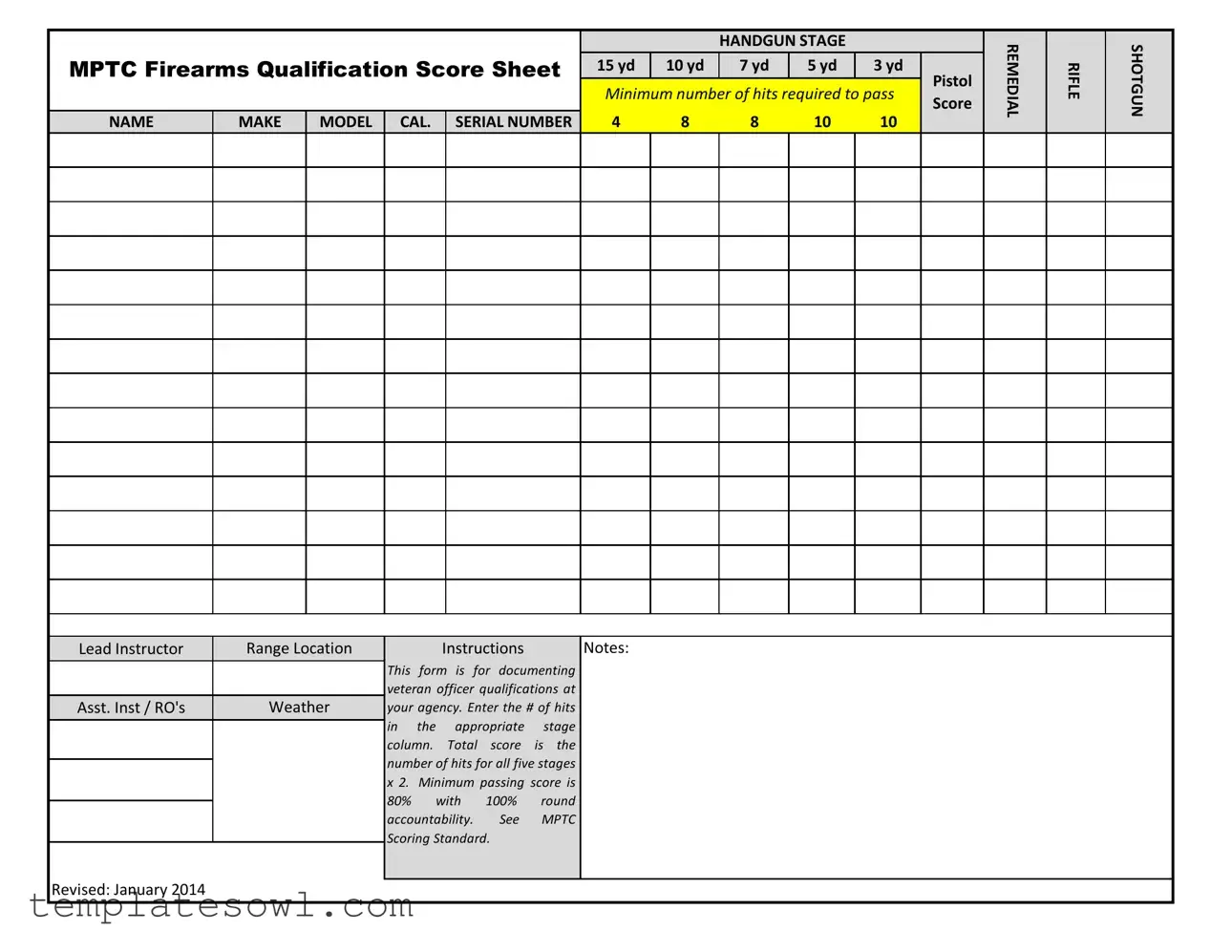What is the purpose of the Firearms Qualification Score Sheet?
The Firearms Qualification Score Sheet serves as a formal record for documenting the qualifications of veteran officers in various firearms training stages. It helps to ensure that officers demonstrate proficiency by tracking their performance during training exercises.
What information is required on the form?
The form requires basic information about the officer and the weapon being used. This includes the officer's name, the make and model of the firearm, the caliber, and the serial number. Accuracy in filling this information is important for accountability and tracking purposes.
How is the scoring calculated on the Score Sheet?
Scoring is calculated based on the number of hits the officer makes during the qualification stages. There are five stages outlined on the form, and the total score is determined by multiplying the total number of hits by two. It’s important to enter the number of hits in the appropriate stage column for accurate scoring.
What is the minimum passing score for the qualification?
The minimum passing score for the firearms qualification is set at 80%. This means that an officer must demonstrate adequate proficiency by achieving at least this score during training to qualify successfully. Additionally, 100% round accountability is necessary to validate the score.
Who completes the Firearms Qualification Score Sheet?
The Lead Instructor or designated Range Officer is responsible for overseeing the qualification process and completing the Score Sheet. These individuals ensure that the scoring reflects the officer's performance accurately and adheres to the guidelines provided by the relevant training standards.
What stages are included in the qualification process?
The qualification process includes five stages, each requiring a different number of hits to pass. The stages range from 3 yards to 15 yards, with varying hit requirements, such as 4 hits at the 15-yard stage and up to 10 hits at the closer stages. This diversity allows for a thorough assessment of firearm handling skills.
Can the Score Sheet be used for other firearms beyond handguns?
While the Firearms Qualification Score Sheet specifically mentions handguns, it can also be adapted for use with rifles and shotguns. Agencies may modify their version to ensure it meets their specific training and qualification needs for different types of firearms.
Where can I find the MPTC Scoring Standard?
The MPTC Scoring Standard can usually be found on the official website of the Massachusetts Peace Officer Standards and Training Commission or through your agency’s firearm training division. It’s crucial to familiarize yourself with these standards, as they outline the expectations for scoring and accountability during qualification.
What should I do if there are discrepancies in scoring?
If there are discrepancies in scoring, it’s essential to address them immediately with the Lead Instructor or Range Officer. They will have the authority to review the scores and make any necessary adjustments according to the established training and assessment protocols.

